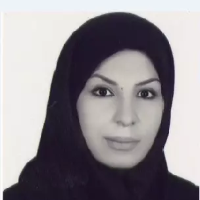Influence of Ornamental Motifs of the Sassanid Period on the Ornamentation of the Vegetable-Islamic Painting of the Mosques of Al-e Buya: Case Studies of the Paintings of the Georgiere Mosque, Nain Mosque, and Zawarrah Mosque
Ideology and worldview of societies have noticeable impact on artistic arrays formation. In Islamic Art, Plant motifs have a special place and they have a large part of the ornamentation. Most of these motifs have symbolic meanings in religious places. Ancient Iranian considered these motifs to be mythological and sacred. These motifs have continued in the Islamic period. Āl-e Būya rise to power alongside Islamic-Shiite ideas witnesses the rise and fall of Sassanian thought in the art of this period. The artwork created in this context reflects the beliefs of the pre-culture era which have become symbolic. Cognitive elements that have formed these insights could be identified by using the iconology method and social study in researches at the same time. The research study seeks to express the concepts hidden in the plant motifs used in the art of the Āl-e Būya era, and the influence of the pre-Islamic thought and art to identify the religious beliefs of this period. The main question of the research is about the quiddity and essence of technical and visual similarities and differences of floral images in the art of early Islam and pre-Islamic art. The question are as follows: what are the most important motifs and subjects transferred from the paintings of the Sassanid period to the architectural works of Āl-e Būya mosque? What factors have led to the transfer of symbols from the Sassanid period to the Āl-e Būya era? The aim of this research is to study and represent Iranian symbols in the emergence of motifs and their application in Islamic art. This article has been done by Descriptive-analytical with a semiotic approach has examined the process of the formation of Islamic motifs. The results indicate that the motifs used in the ornamentation of the Islamic period in Āl-e Būya mosques are influenced by the role of the Sassanid themes so that we can see Iranian attitudes and beliefs in the formation of Plant-Islamic paintings of these mosques. Along with this influence, the formation of Islamic culture has created abstract motifs by a Muslim artist.
Floral motifs , Sassanid Art , Āl-e Būya , Arabesque , Jorjir , Naein , Zavareh
- حق عضویت دریافتی صرف حمایت از نشریات عضو و نگهداری، تکمیل و توسعه مگیران میشود.
- پرداخت حق اشتراک و دانلود مقالات اجازه بازنشر آن در سایر رسانههای چاپی و دیجیتال را به کاربر نمیدهد.


